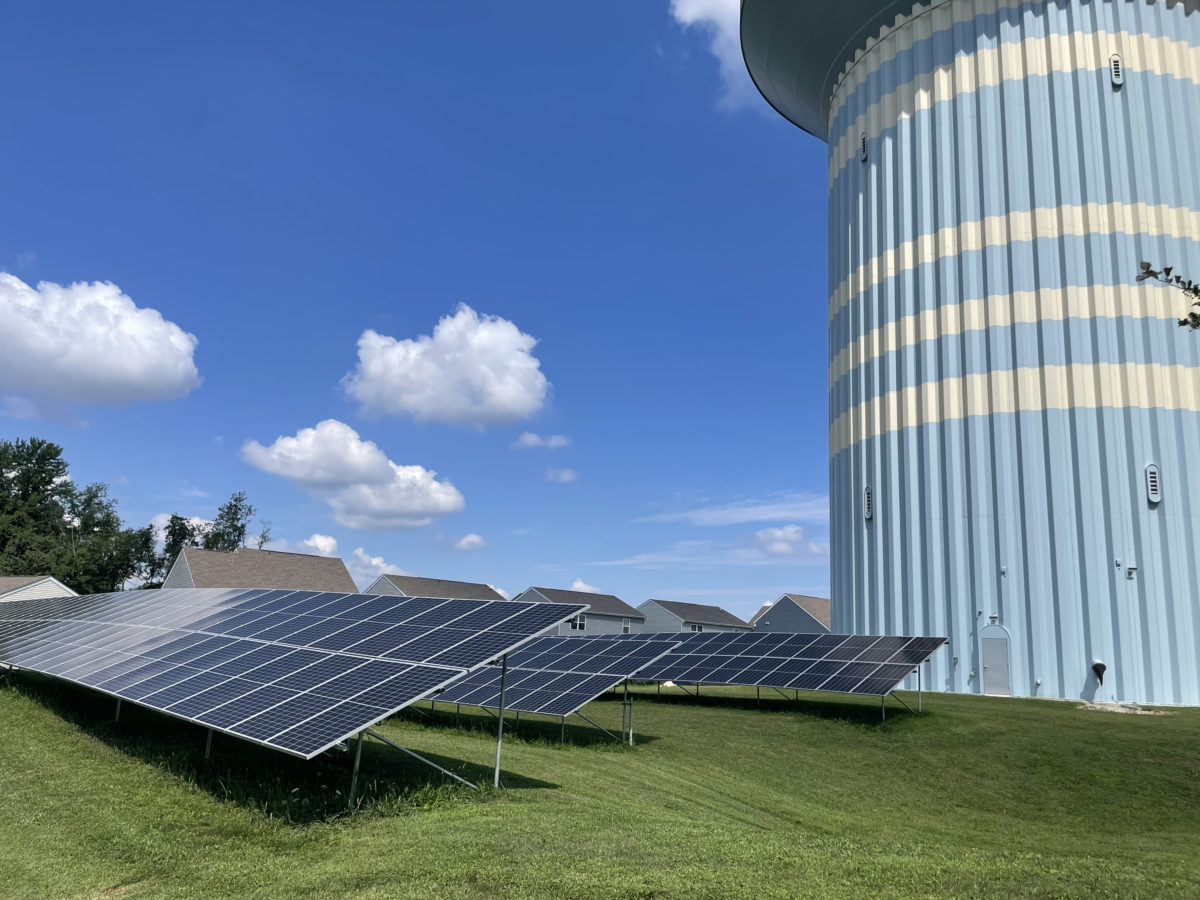With a rise of extreme weather events and an aging centralized electric grid, extended power outages are a rising threat to community resilience. Aware of these threats, AEP Ohio contracted Eaton to help construct a solar microgrid dedicated to supporting its Tussing water booster station.
A microgrid can operate fully independently, or on “island” mode, providing continuous power through long-term outages. The water booster station’s microgrid includes 100 kW of onsite solar generation and 440 kWh of battery energy storage. The Eaton project is fully commissioned and expected to achieve operations this quarter.
The microgrid supports the City of Columbus climate action plan to reduce emissions by 45% and implement five microgrid pilot projects by 2030 on the path to achieving carbon neutrality by 2050. It was funded partially through AEP Ohio’s Smart City program.
“Climate change is already impacting quality of life in central Ohio, and the challenges stemming from its very existence will only continue to grow more frequent and more common in the years ahead,” said Columbus Mayor Andrew J. Ginther. “We have an obligation to strengthen the resiliency of our infrastructure and to meet these challenges head on.”
The EPA said as much as 40% of operational costs for drinking water is tied to energy use. The new microgrid is an example of supporting this critical infrastructure more sustainably while remaining cost-effective.
Microgrid adoption
Microgrids are increasingly being adopted by critical infrastructure and transportation providers to ensure long-term resilience of operations under a changing climate and grid. According to Wood Mackenzie data, the U.S. microgrid market saw a 47% increase in solar and storage capacity additions in 2022 compared to 2017 levels.
Moreover, the data shows that more than 175 solar projects and solar-plus-storage microgrids have been in active development and were scheduled to come online by the end of 2022. The U.S. microgrid market reached 10 GW in the third quarter of 2022, with more than 7 GW in operation and the rest in planning or construction stages.
Military microgrid installations will likely grow as a result of the U.S. Army’s resiliency goal to install a microgrid on every base by 2035. These will include renewable generation and large-scale battery storage, with the goal being able to “self-sustain its critical missions” on all Army installations by 2040.
Pittsburgh International Airport became the first major US airport to be powered entirely by a microgrid using natural gas and solar energy. In its first year of operation, carbon dioxide emissions were cut by about 8.2 million pounds, said Tom Woodrow, Pittsburgh Airport’s senior vice president of engineering and infrastructure intelligence. It is estimated that the airport saved $1 million in energy costs.
The 20 MW microgrid powers the entire airport and hotel and remains connected to the grid as an option for emergency or backup power if needed. Due to the cost savings, the airport is considering doubling the number of solar panels from over 9,000 to over 18,000.
In a remote community in Alaska, residents of the village of Shungnak, Alaska have become accustomed to burning diesel fuel for its electricity. As oil prices soared in early 2022, the village paid $8.25 or more to keep its smelly, loud diesel power plants running.
A solar plus battery energy storage project funded by the U.S. Department of Agriculture and the Northwest Arctic Borough fundamentally changed how the village sources its electricity. A 225 kW solar array offsets much of the village’s energy needs, which generally ranges between 200kW and a peak of 300kW. LG 405 W NeON 2 Bifacial solar modules were selected for the array.
The microgrid is intelligently designed to operate and supply power in times where diesel generation would be most expensive. Diesel fuel transportation and maintenance costs are particularly high in remote, cold climates in freezing temperatures, and the microgrid can respond and dispatch power at those times of highest cost.
“Thanks to the energy storage system, we can turn the diesels off but keep the lights on in the community. It also gives the local utility the ability to run on 100% clean energy for hours at a time,” said Rob Roys, CIO, Launch Alaska.
This content is protected by copyright and may not be reused. If you want to cooperate with us and would like to reuse some of our content, please contact: editors@pv-magazine.com.









By submitting this form you agree to pv magazine using your data for the purposes of publishing your comment.
Your personal data will only be disclosed or otherwise transmitted to third parties for the purposes of spam filtering or if this is necessary for technical maintenance of the website. Any other transfer to third parties will not take place unless this is justified on the basis of applicable data protection regulations or if pv magazine is legally obliged to do so.
You may revoke this consent at any time with effect for the future, in which case your personal data will be deleted immediately. Otherwise, your data will be deleted if pv magazine has processed your request or the purpose of data storage is fulfilled.
Further information on data privacy can be found in our Data Protection Policy.